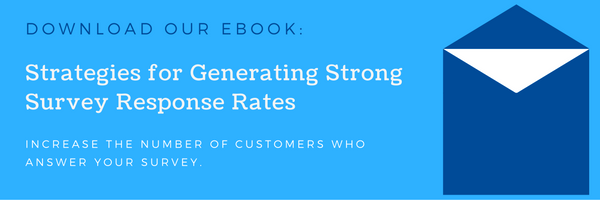Tips for Engaging Non-Responders
When it comes to customer satisfaction surveys, non-responders (those customers who choose not to provide feedback) are a common concern among business leaders. Beyond the ramifications of sample validity and margin of error, “silent” customers pose a risk to your company simply because you do not know how they feel about your products, services, or people. Therefore, it’s important to apply the right strategies to minimize the non-responder group.
But try as we might – with well-crafted subject lines, succinct and eloquent content, and a short, well-designed questionnaire – getting some customers to click the survey link can occasionally feel like an uphill battle. What tactics can you easily employ to start the process of improving survey response rates?
First, Design a Survey Questionnaire that Adheres to Best Practices
Customer satisfaction surveys that are too long, use improper scales, include poor phrasing, or have questions that can potentially frustrate respondents lead to increased drop-offs and non-response. For a more in-depth look at constructing surveys, read our post on the Top 10 Common Problems in Designing Effective Surveys.
Time Your Survey Appropriately
Although the particulars will differ depending on your invitees and the type of survey you’re sending, generally speaking, you should avoid launching your customer satisfaction survey around holidays and times of the year that your target audience may be busier than usual. You should also be cognizant of the time of day that you’re sending survey invitations. As a rule of thumb, early morning and around noon tend to be the sweet spots in the business-to-business (B2B) world.
Consider Offering Incentives
In some circumstances, notifying invitees that you will make a small contribution to a charity or enter them into a drawing could motivate customers to respond. For B2B companies, we typically discourage a direct incentive as the improvement in their experience with your company should be incentive enough. In the B2C world, discounts, loyalty points, and opportunities to win something are more common.
Remember to Promote Your Efforts
Throughout the sales and onboarding process, tell new customers to expect a survey in the future. Some of our clients even build the expectation of customer feedback into the service agreement. In addition to encouraging future responses, the commitment your company has to collaboration and co-creation can serve as a differentiator.
Continually Take Action
Probably most important, if customers see your continuing effort in gathering and acting on their feedback, they become more likely to lend their input and have their voices heard. That’s why it is so important to demonstrate to customers that you listen to all feedback – positive and negative. Of course, you do not need to implement every recommendation but sharing improvements shows you’re focused on new ways to deliver an exceptional customer experience.
Non-responder Survey
If after implementing these tactics, you still suffer from poor survey response rates, it’s time to start gathering insight into why these customers aren’t responding to your survey. Do you have a process in place for contacting customers who did not respond to the survey? Of course, reaching out to every single customer who neglected to respond is often not practical – mainly because it is too resource-intensive. In such cases, consider conducting a “single question non-responder survey.” This is an anonymous survey that seeks to understand why customers may not have responded. Response options can vary from “I forgot” to “I’m not the appropriate person to respond” to “my feedback never leads to action.” You may be surprised to see how many non-responders will take a few seconds to answer. Then, analyze the responses to shed additional light on why customers aren’t clicking your customer satisfaction survey link.
Additionally, reaching out by phone to a small, randomly selected portion of your non-responders can provide valuable insight into the sentiment among all of your non-responders. This will allow you to get richer feedback than a single-question non-responder survey but should be more manageable than following up with your entire list.
Unfortunately, there will always be a segment of your customer base who (for one reason or another) won’t respond to your surveys. That’s why it’s so important to implement the above techniques and clearly demonstrate the time they take to provide feedback is worthwhile.


